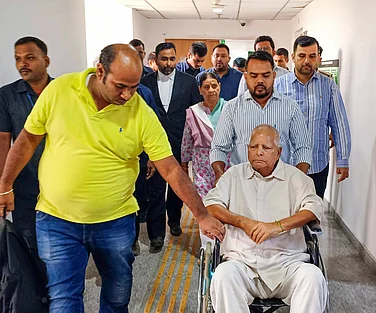It is possible to argue that the Indian national movement has been the greatest achievement of the Indian people. Like all revolutionary movements it had modest beginnings, traceable in complaints against particular policies and measures of the British government, without yet any notion of direct opposition to that government, let alone any vision of what India would be, if or when the colonial rule was to end.
By the end of the century, Indian nationalists had produced brilliant critiques of British rule. Dadabhai Naoroji, the ‘Grand Old Man’ of Indian nationalism, published his Poverty and UnBritish rule in India (1901), a collection of his writings of over some 30 years. R.C. Dutt brought out his two volumes of the Economic History of British Rule in India (1901 and 1903), and G. Subramaniya Iyer his Economic Aspects of British Rule (1903), all devastatingly critical of British rule, of the tribute Britain exacted, its heavy taxation, and its forcible capture of the Indian market. But beyond calling for certain specific measures of reform, they could counterpose no large vision of a liberated India. Indeed, R.C. Dutt disowned any such intention, when he wrote, for example, in his preface to his first volume of the Economic History of British Rule: “The people of India are not fond of sudden changes and revolutions. They do not ask for new constitutions, issuing like armed Minervas from the heads of legislative Jupiters. They prefer to work on lines which have already been laid down”. It almost seemed that what was desired was an improved or reformed British rule with larger Indian collaboration. It is true that that great leader of the ‘militant’ nationalists, Bal Gangadhar Tilak, already spoke of Swaraj or self-rule, but he also held that what India would be like under Swaraj would be for Indians to decide when they actually possessed it. At least, this is what he held in respect of social reform, over which he denied the right of foreign rulers to legislate.

In this background, Mahatma Gandhi’s attempt, while on voyage from England to South Africa in 1909, to write a tract especially devoted to what India should be like after attaining Swaraj, was a remarkable enterprise. This was his Hind Swaraj, whose text is in the form of a dialogue between the ‘Editor’ (Gandhiji himself) and an imaginary ‘Reader’. It is natural that Gandhiji’s leadership of South African Indians’ struggle for their rights should have raised in his mind the question whether the principles of the mode of struggle he had adopted in South Africa would apply also to India. But the more important question for him was practically unrelated to South Africa: what was India to be like once its national struggle conducted by these methods was successful and swaraj or self-rule was attained? To Gandhiji, method and object were inter-connected. If the violent group succeeded by their methods, they would apply the same methods of force against their own people upon seizing power. On the other hand, the ‘petitioning’ proclivities of the Moderates were not going to yield results, since such pleas were not going to affect British rulers. ‘Passive resistance’ or Satyagraha (a then recent designation of it by Gandhiji), namely, a peaceful defiance of laws, was accordingly the only permissible mode of struggle, which was moreover bound to be successful once the masses joined it, at the call of leaders who observed moral rectitude (‘chastity’). He now boldly raised the question of what should come after success was attained through such means.
Gandhiji rejected in toto leading Indian nationalists’ admiration for constitutional evolution and the development of India into an industrialised country: There was no room, he proclaimed, for “English rule without the Englishman”. He went on to draw a lurid picture of the ‘civilisation’ and nature of current institutions of England, denouncing its parliamentary system and its society and culture, especially its industrial order. Apparently, the influence of Leo Tolstoy and John Ruskin, whom he had avidly read in South Africa, was at work here. In direct opposition to the Moderates (and most ‘Extremists’), he protested against the destructive effects of the railways on the social-economic landscape, and against the impact of the practices he attributed to lawyers and doctors on the culture and health of India. To him, indeed, pre-modern India had one of the finest civilisations in the world, so that “India, as so many writers have shown, has nothing to learn from anybody else”.
Some of his statements in this vein may please our present RSS pracharaks. But he also firmly held that India, as a nation, had nothing to do with any single religion, and so all religious communities must “live in unity”. Hindus were not to grudge any special concessions given to Muslims. But his main concerns lay elsewhere. In the India of his vision there would be no machinery, but only work done with simple instruments; no modern (especially English) education, but traditional village schools; and villages with their simple ways of life, not the crowded towns with their evil ways. No social reform apparently was necessary. In two sentences Gandhiji comes very near to even approving the caste system, set against the modern cult of equality: “We have had”, he claimed, “no system of life-corroding competition. Each followed his own occupation or trade, and charged a regulation wage”. Nor is there a word against the oppression that women suffered in India (sati, seclusion, ill-treatment of widows), but rather only commendatory words for their position in traditional society.

Leo Tolstoy in his study. Gandhi read him avidly and corresponded with him while in S. Africa
Finally, there is no place for democracy in this vision, especially its electoral from. He had condemned Parliament in Britain; so there was no question of installing anything like it in India. There is no word, therefore, about adult suffrage or women’s right to vote. Apparently, elevated leaders were to get things done through persuasion. He even seems to have played with the idea of letting the English rule over India, once they agreed not to exploit it or ill-treat Indians, and agreed also to listen to good advice!
The Gujarati version of the text was published in South Africa in 1909 and an English translation, made by Gandhiji himself, was issued there in 1910. When Gopal Krishna Gokhale, the famous moderate leader, whom Gandhiji regarded as his mentor, came to South Africa in 1912 to give his support to the cause of the Indian community there, and read the book, he could not but dismiss it as “so crude and hastily conceived”, and even sought its withdrawal. This did not happen; and the first Indian edition of the English version of Hind Swaraj came out in 1919 and a Hindi one in 1921. (A British ban on it was apparently not lifted until 1938). Gandhiji continued to maintain till his very late years that he stood by what he had said in Hind Swaraj, though in 1933 he admitted that he had “discarded many things and learnt many new things” since its writing.
Gandhiji could, perhaps, partly overlook the gulf between the idealisation of India in Hind Swaraj and the reality on the ground because of the very fact that the intermediate ground between the text’s ideal and the current reality was so vast. Within that ground, Gandhiji took up grievances of large sections of the poor and fought for them under the banner of ahimsa. But he was thereby himself rousing masses whose actual aspirations lay in quite a different direction than the moral heights to which he wished to lift them. Increasingly, as they entered the struggle, it was their material expectations that they wished to see satisfied in a free India, rather than the puritan society, celebrating its poverty, that Gandhiji loved to project.
It is this gap between Gandhiji’s ideal and the masses’ aspirations that provided space for Jawaharlal Nehru’s alternative vision. Nehru had always had a special relationship with Gandhiji. From the beginning of his political career—certainly, from 1920—he remained steadfast on Gandhiji’s side in all the movements Gandhiji led; and, but for a passing misunderstanding in 1928, their affection for each other remained seemingly unimpaired. Nehru’s deep admiration for Gandhiji was often expressed in his Glimpses of World History, where he set him by the side of Lenin as the redeemer of the poor. Yet in a profound sense, Nehru was, by orientation, an irreconcilable critic of Gandhiji’s worldview, and the vision for India that he presented from the late 1920s onwards, especially in his Glimpses of World History, published in 1934, and An Autobiography, published in 1936, along with his articles, speeches and addresses, was totally opposite to that of Gandhiji.
To begin with, his starting point was markedly different. Gandhiji had appealed again and again to dharma, which he himself rendered in his translation uniformly as ‘religion’, but according to context could mean Hinduism, morality or even imagined or established custom. For Nehru, reason, not religion, was the starting point. He disowned all belief in God or afterlife, going so far as to say that if to be atheist meant a person “who refuses to make reason subservient to faith”, then he wished “the more we have of them (atheists) the better”. Contrary to Gandhiji, who had given a special status to India and its ancient culture, Nehru felt disturbed about one’s commitment to only one’s own nation, since nations tend to divide mankind into separate units. He felt that the use of nationalism could be justified only when one was fighting the ruling colonial power, but not in other circumstances.

V.I. Lenin and his audience in Moscow. For Nehru, he was a redeemer of the poor.
Whereas Gandhiji had been influenced by Tolstoy and Ruskin from the West, Nehru’s sources of inspiration were obviously Marx, Lenin and socialism. Unlike Gandhiji, therefore, his vision could not accommodate India’s traditional social order. He openly espoused socialism, about which he spoke even in his presidential address to the Congress in December 1930. He saw India as an industrialised country, but without capitalism, and he wished India to get rid of its zamindars or landlords. Unlike Gandhiji, he had no use for India’s traditional education but wished science to be cultivated as widely as possible. He often underlined the need for a ‘scientific spirit’. Finally, as against Gandhiji’s denunciation of parliamentary democracy, he was steadfast in upholding the principle of adult suffrage and a democratic society. While Gandhiji had been silent on the matter, Nehru felt that economic development could not be left to market forces, but had to be guided by the state, through planning, an idea obviously influenced by the system of planning instituted in the Soviet Union.

Nehru stressed in his Autobiography that the Congress party, committed essentially to the objective of independence, could not be expected to adopt a socialist programme. However, it needed to present some picture of what India would be when free, and, therefore, besides a constitutional scheme (like the Motilal Nehru Report, 1928), it had also to present a platform outlining the political, economic and social measures that would be undertaken in Free India. Such a document (the ‘Fundamental Rights’ resolution) Nehru drew up for the Karachi session of the Congress (March 29-31, 1931). This provided for adult suffrage, equality between men and women, absence of discrimination on the basis of caste, and the state’s “neutrality in regard to all religions”. In agrarian matters, it did not call for the abolition of zamindari, but for substantial rent reduction. Similarly, capitalism was not to be abolished, but “the State shall own or control key industries and services, mineral resources, railways, waterways, shipping and other means of public transport”. True, as Nehru insists in his Autobiography, this was not a socialist programme and could conceivably be carried out by a “capitalist state”. It was, however, in a large part an antithesis of Gandhiji’s own vision for India. Gandhiji’s unconditional acceptance of it, so that he moved the Fundamental Rights resolution himself at Karachi, was regarded by the liberal politician Sir Tej Bahadur Sapru as “a heavy price [paid by Gandhiji] for the allegiance of Jawaharlal”. But the reality, perhaps, was that Gandhiji too realised that after the massive participation of the poorer classes in the Civil Disobedience Movement in 1930-31, they were entitled to expect that free India, for which they had been called to battle, would give them some tangible relief in material life: and for this purpose, the Karachi resolution provided the necessary text for a general programme of the Congress.
If Gandhiji made a concession here, it does not mean that he himself was really converted to it. True, some things that the Hind Swaraj had ignored, such as the oppression of untouchables and the maltreatment of women in traditional Indian society, now figured greatly in Gandhiji’s thought and action. But the glorification of the village and mistrust of machine and modern science remained.
This can be seen in his note on his Constructive Programme, prepared in 1941. In it ‘communal unity’, already emphasised in Hind Swaraj, is given primacy. The removal of disabilities of depressed castes and women’s uplift are now also major issues. Otherwise, there are no indications of any departure from Hind Swaraj. While he acknowledged the existence of “the gulf between the rich and the hungry millions”, there is no concession to any shade of socialism or land reform. “I adhere”, he firmly declares, “to my doctrine of trusteeship [entrusted to mill-owners and landlords over their workers and peasants] in spite of the ridicule that has been poured upon it”. In a statement in 1947, Gandhiji had conceded that “machine power can make a valuable contribution towards economic progress”, and it was just “a few capitalists [who] have employed machine-power regardless of the interests of the common man”. Yet, even after such an observation, he would invite those very capitalists to be custodians of the interests of their labourers. Nor was there any question of handing over industries to the state, for that would be socialism. Nehru says in his Autobiography that he had hoped he could influence Gandhiji to move “in a socialist direction”, but he now realised that “there are basic differences between Gandhiji’s ideals and the socialist objective”. Indeed, there was no recognisable concession given to socialist sentiments in Gandhiji’s subsequent statements.

Karl Marx’s writings shaped Nehru’s ideas of socialism
On the other hand, it can be argued from a reading of Nehru’s Discovery of India (1945) that some important concessions now came from Nehru himself. In this book, despite the objective spirit it maintains over much of its length, there is a new celebration of India as a nation. “We can never forget the ideals that have moved our race,” exclaims Nehru here—an echo of Hind Swaraj? Further, we are now told that even “religions have helped greatly in the development of humanity”. So, are we back to Gandhiji’s dharma? Nehru now could see “some logic also in the theory of reincarnation” and “appreciate to some extent the conception of monism”! Yet, despite these concessions to the realms of race and spirit, Discovery of India reveals no other hints of departures from Nehru’s personal commitment to a socialist India in the future, attained under a democratic system.
Gandhiji’s assassination on January 30, 1948, by Nathuram Godse and his backers led Nehru to exclaim, “the light has gone out of our eyes”. Gandhiji left no successor to really pursue his vision. One is reminded of Nehru’s own remark of an earlier time that Gandhiji himself tended to exercise “a psychic coercion...which reduces many of his followers to a state of mental pulp”. This seemingly cruel remark turned out to be a far-sighted one: once he fell to the assassin’s gun, there were few who could creatively carry on his cause.
During the 17 years (1947-64) that Jawaharlal led this country as prime minister, he at last obtained Congress’s acceptance of the goal of a “socialistic pattern of society” (Avadi session, 1955). In 1958, in a note titled the ‘Basic Approach’, he reiterated his commitment to both “democracy and socialism”, calling them “means to an end, not the end itself”. There came about the construction of the public sector, some degree of agrarian reform, promotion of scientific education and the apparatus of planning. Despite inadequate resources, much advance was made, though it is not the purpose here to weigh the degree of success actually attained.
What is important for us is to realise that both Gandhiji and Nehru had ideals which were in content so very different, yet had this in common: a sincere urge to serve the poor and the down-trodden of this country, without much regard for the interests of the rich and powerful. It is surely the tragedy, not of these two men, but of our nation, that we are today seemingly bereft of any ideal, amidst our worship of the corporate sector and the narrowest nationalism.
***

A Very English Loot
- The drain of wealth from India to England gathered pace after 1757, when the East India Company acquired immense political power. The wealth extorted from Indian rulers amounted to £6 million between 1758 and 1765.
- The Government of India had to make huge payouts to England, known as ‘Home Charges’. An estimate puts it at £35 million annually.
- While this huge drain ruined India’s economy, it resulted in huge investments in Britain’s agriculture and industry after 1750 and were partially responsible for an agricultural revolution and the Industrial Revolution after 1750.
- In addition, the huge public debt undertaken by the government and its interest meant a spiralling, regressive tax burden on Indians
Irfan Habib One of India’s top historians, he teaches at Aligarh Muslim University

























